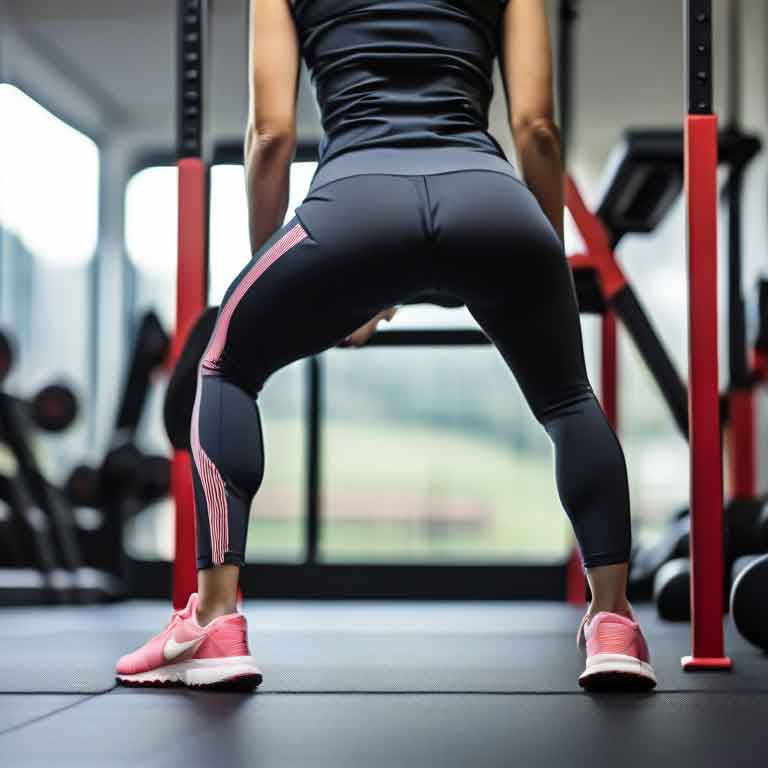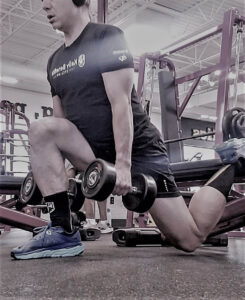Cycling is a good exercise for people suffering from Gluteal Tendinopathy but only if it is done in moderation. Gluteal Tendinopathy, also known as Dead Butt Syndrome or gluteus medius pain, DBS is something many cyclists face.
Cyclists spend a lot of time cycling, which overworks the glutes such as hips, knees, and lower back. Over time, the soreness travels throughout these muscles and the deep glute muscles might stop working.
Even though Gluteal Tendinopathy is common for many cyclists, it can also be cured if a person knows how to cycle in the correct way.
There are a lot of gluteal tendinopathy exercises to avoid and exercises that would help. If you are someone who loves to cycle but does not want to develop or wants to treat Gluteal Tendinopathy, then keep reading.
Is it Good to Cycle with Gluteal Tendinopathy?
A study conducted in 2017 and reported in the Journal of Orthopaedic & Sports Physical Therapy discovered that cycling did not lead to an escalation in discomfort or other indications in individuals dealing with gluteal tendinopathy.
Over a span of 6 weeks, participants engaged in cycling sessions lasting 30 minutes, occurring thrice weekly.
However, a 2019 study published in the Journal of Athletic Training found that cycling could worsen symptoms of gluteal tendinopathy in some people. The study participants cycled for 30 minutes, 3 days per week for 4 weeks.

According to medical research, we can say that, if the condition of your glutes is not in the best shape then you should get enough rest so that they can heal faster.
However, resting is only going to decrease the pain but not help make the glutes get better. Chances are the pain might come back if you do not work on them.
For that, exercising with the pain is going to make the area much stronger and the pain starts fading away eventually.
It is crucial that you do not strain your muscles and avoid putting too much load so that the affected areas can get stronger quickly. As a result, various injuries such as hip pain from cycling are not uncommon.
How to Activate Glutes While Cycling?
It is crucial that you activate your glutes while cycling to make them stronger. Here are some of the ways you can engage your glutes while cycling.
- Without riding the bike, carry out glute activation workouts.
If you want to engage your glutes while cycling, it is necessary that you make your brain get into the habit of activating the glute muscles by doing glute exercises every now and then.
The donkey kick is one of the best exercises to do which is great for glute activation.
Start by being on all fours on the ground and slowly lift one leg up behind. While the leg is in line with the body, kick back and repeat.
Another exercise is the single-leg deadlift which is also great for activating the glutes. Clamshells, glute bridges, and banded sideway walks are some of the exercises that do not need a bike and will not take long.
- Muscle activation
You want the muscle fibers to contract as the brain releases electrical signals to let us move our bodies in the way we want them to.
When you train your body for muscle activation, it allows the muscles to be more stable during movement and as a result, the joints and bones are protected.
Moreover, when you are riding your cycle, it is important that you generate force or else the glute muscles are not going to get stronger.
The most crucial reason for muscle activation is, it helps to improve posture and prevents pain.
- Change the seating arrangement.
The way you are sitting on your cycle while riding it can make a huge difference in glute muscle activation.
Even if you are not keen on spending a lot of money on getting a bike fit or bikes with high-mounted seats, this one thing will change your cycling journey.
On your next ride, you want to sit a bit further back so that your body is sort of parallel with the body of the bike. Doing so is going to make your glute muscles work harder as your core is not as involved.
You are going to notice a difference as soon as you try this out. If your torso is forty-five degrees forward while cycling then you have properly activated the glutes.
- Bike fit
A professional bike fit is a customized bike position that is created to work according to your body and riding style. You can get it done to your cycle from any store that sells bikes or a certified bike fitter.
The process does not take any time more than two hours. It will help you to ride more efficiently and comfortability.
Moreover, you have a stronger grip and control over the bike so it is going to help prevent injury.
Some requests you can make so that they can fix them are the saddle is too high, handlebars are high, or cleats are too far forward.
All of these are going to ensure that you activate the glutes properly.
How Is Cycling Good for Gluteal Tendinopathy?
Now, you might be wondering how can cycling be good for gluteal tendinopathy if it is the reason for the numbness. The answer is, that you need to cycle in the correct way.
- Cycling with enough intensity is going to ensure adequate blood flow to the glutes and muscles. This helps in strengthening the tendons as the muscles work in the correct manner.
- Ensure that you are not wearing yourself out and keep the cycling intensity at a moderate level. You do not want to cause any wear and tear in the muscle and would rather want the tendons to heal.
- For treating gluteal tendinopathy, you should cycle through plain land with minimal bumps so that you do not put added stress on your body.
- Everyday cycling is going to make your glute muscles stronger and also ensures that blood flow to those areas does not get restricted.
How to Know if Cycling is Helping My Gluteal Tendinopathy?
After you start cycling in moderate amounts daily or often to treat your gluteal tendinopathy, you should start noticing some changes.
The pain in your glute muscles should be less than half of what it used to be. You will not feel any pain or soreness the next morning.
Once the muscles start getting better, there will be no pain after an hour of your cycling ride. These are some of the changes you will notice.
However, if you see that the pain does not get better then you should ease off cycling and get medical attention. Cycling too much is not good as it can cause severe nerve damage.
Does Cycling Build Glutes?
Cycling is not the best way for building glutes but it is great for strengthening your glutes.
If you do outdoor uphill training then your glutes are going to get stronger but muscles are not going to build up because such training is not intense enough.
When you are cycling, hamstrings, quads, and calves are the primary muscles that get targeted.
For building glutes, you need to hit the gym and carry out glute-targeting workouts to ensure that your glutes are getting all the attention during the workout.

Which Exercises are Best for Gluteal Tendinopathy?
Once I had major hip pain from cycling for years. I started doing at least twenty squats a day, both side and regular, and my hip pain is gone. May be helpful?
So, other than cycling, strength training exercises are some of the best exercises to treat gluteal tendinopathy, but you need to know how to do them in the correct way.
There are two types of gluteal tendinopathy exercises you can do.
1. Isometric exercises
Isometric exercises are appropriate for gluteal tendinopathy during the early stages, as the tendons are still sensitive. In such workouts, the gluteal muscles get tensed but you do not have to move your legs.
Leg lifting is one of the most common isometric exercises and you can do that on your bed using a pile of pillows. You do not want to stretch the tendons and instead want to build them up.
Clamshells are another exercise that is done by laying on your side. If your glutes can tolerate, then you may carry out these exercises almost daily and if not, then three times a week is enough.
2. Isotonic Exercises
Once you have strengthened your tendons enough using isotonic exercises, you need to increase the intensity of the workouts.
It is still crucial that you do not stretch the tendons as they can get irritated very easily. Some isotonic exercises are bridges, squats, and leg presses.
Gluteal bridges target the muscles within the glutes directly so they are good for strengthening the lower back areas.
There are some others and all of them have different purposes so you need to find ones that are appropriate for the glutes.
Since isotonic exercises are much harder, you should not do them daily. In between sessions, at least a day should be kept for recovery.

Which Exercises to Avoid for Gluteal Tendinopathy?
There are various gluteal tendinopathy exercises to avoid because they are not helpful for your glutes. Stretching exercises are the most damaging for your glutes if you have any issues with your muscles.
For hip flexibility and to reduce stiffness, runners are often advised to carry out stretches but it usually increases the pain.
Any movement that requires bringing your knee across the body is not recommended and can cause further damage.
Other stretches such as pushing the hip outward such as IT band stretches can also be damaging and should be carried out with caution.

What Aggravates Gluteal Tendinopathy?
If you overuse or underuse your tendons then it is going to cause gluteal tendinopathy. During physical activities, putting way too much force on the tendons is going to overwork the muscles.
In other circumstances such as facing any sort of accident or fall can cause tendon compression. Accidents might also cause hip instability which is another reason for gluteal muscles to be inactive.
For underusing the tendons, some people stop walking due to sudden weight gain or obesity and this can cause excess pressure on the tendons.
Also, a sedentary lifestyle is another reason as the muscles do not get to work around much.
Can I Cycle with Gluteal Strain?
When there is a strain in the gluteus muscles, there is a complete or partial tear of the muscles. If you start noticing that there is a sharp pain when you are squeezing the buttock muscles, chances are you have a gluteal strain.
It is not wise to cycle when you have strained your gluteal muscles as it can cause nerve damage from cycling.
However, if the strain is not severe then you can cycle for fifteen to twenty minutes daily as cycling also helps with muscle strain and makes them stronger.

Is Cycling Good for Piriformis Syndrome?
For people with piriformis syndrome, cycling is not the best option as it can cause excess strain on the piriformis muscles.
Seated exercises should be avoided as they tend to aggravate the condition and make it worse. However, short distance and light cycling are okay as long as you are not straining your muscles.
Is walking or cycling better for the glutes?
To get the best results, cycling is better for the glutes as it makes them put in more work than walking. Walking tends to train your bones to be stronger while cycling works out the glutes and quadriceps.
Can cycling make the glutes weak?
Poor bike fit decisions will cause weak gluteal muscles. If your bike is not adjusted to your body and for an efficient ride, then it will weaken your glute muscles over time.
Moreover, you also have to be careful about the way you want to ride your cycle as riding it incorrectly will also cause weak glutes.
Is cycling bad for the knees?
Cycling puts a low impact on the knee joints so the chances of knee injuries are lower. For patients with knee problems, light cycling is a good exercise and helps to improve the condition over time.
In Conclusion
Any exercise or physical activity done in moderation is good for the body. Cycling strengthens the gluteal muscles and helps prevent gluteal tendinopathy if it is done correctly.
For such reasons, you have to get a bike fit.
Also keep in mind that there are certain health issues such as hip pain from cycling, when it comes to excessive cycling and you might be doing further damage in hopes of improving your health.
So, we suggest that if you are considering cycling with gluteal tendinopathy, it is important to talk to your doctor or physical therapist first.
They can help you determine if cycling is right for you and can provide you with instructions on how to do it safely.

Dr. Michelle Spiel, a distinguished Australian dentist and a devoted cyclist, has seamlessly integrated her passion for healthcare and cycling into a remarkable journey of achievement and dedication.


Leave a Reply